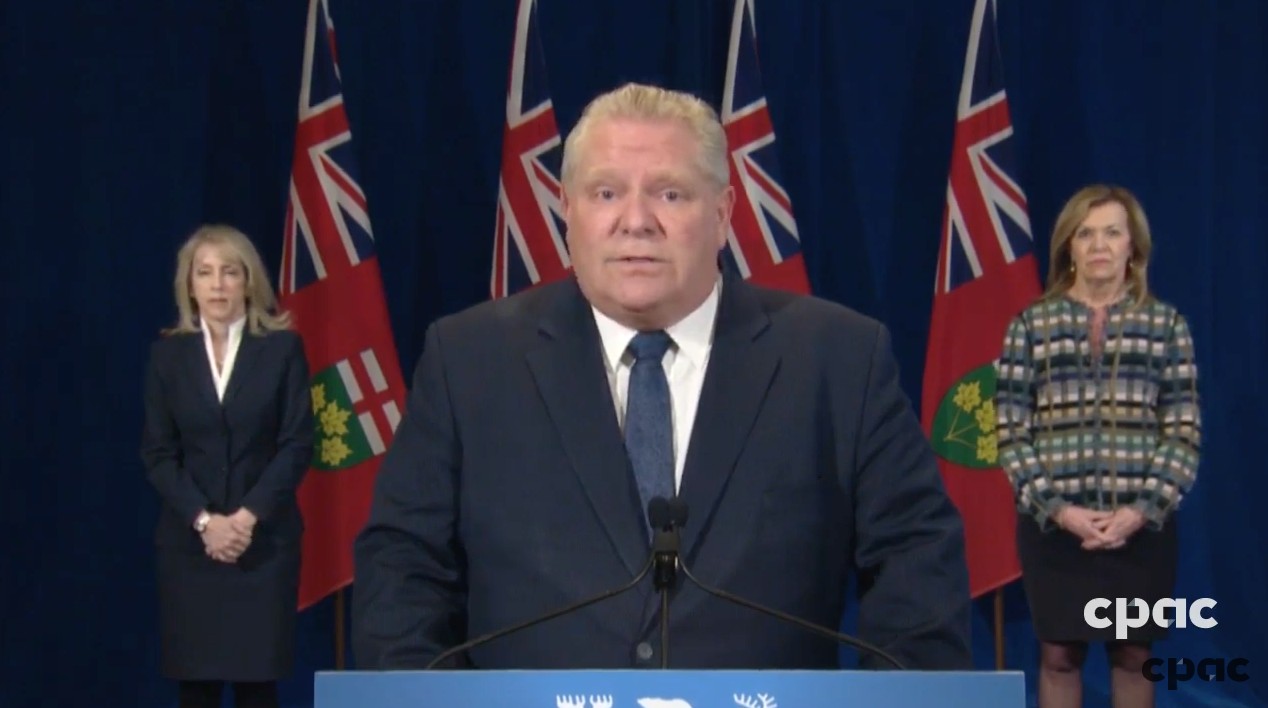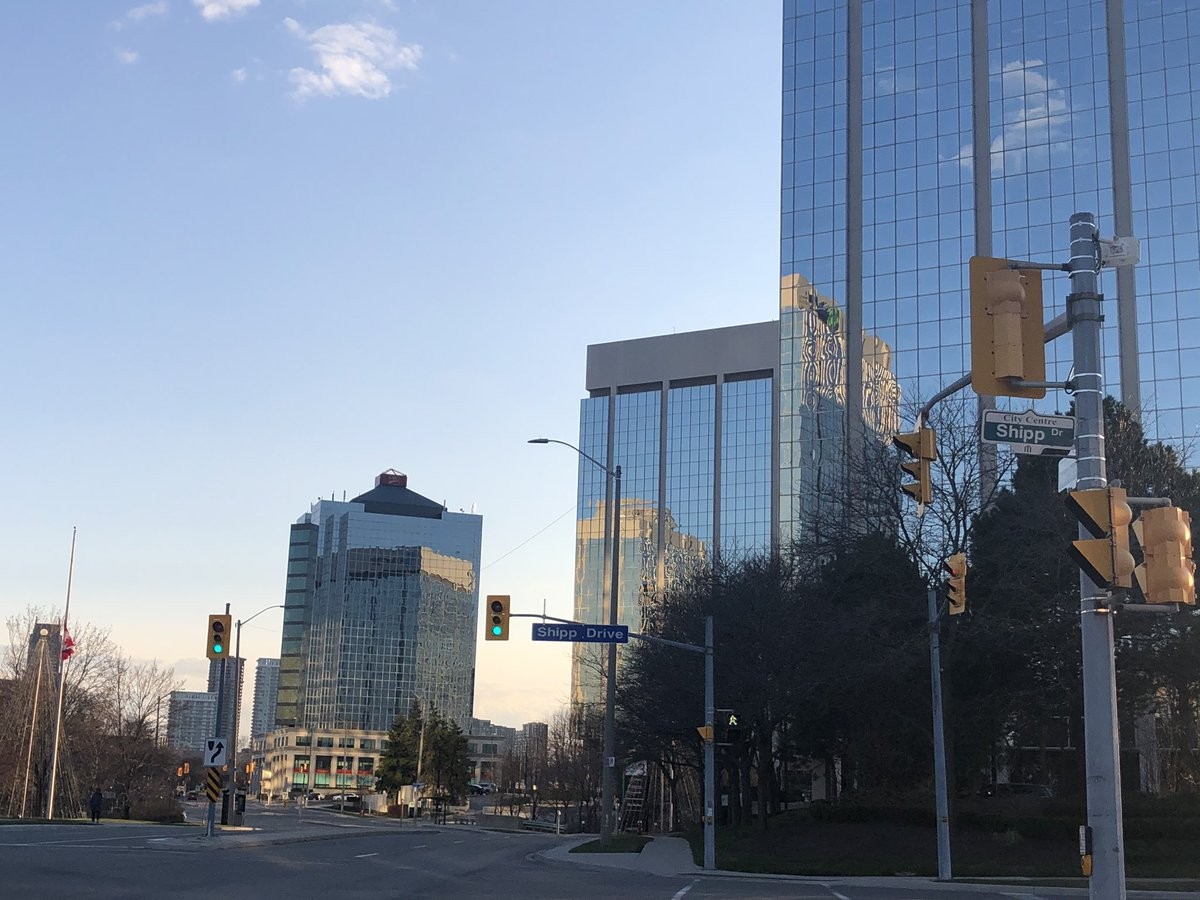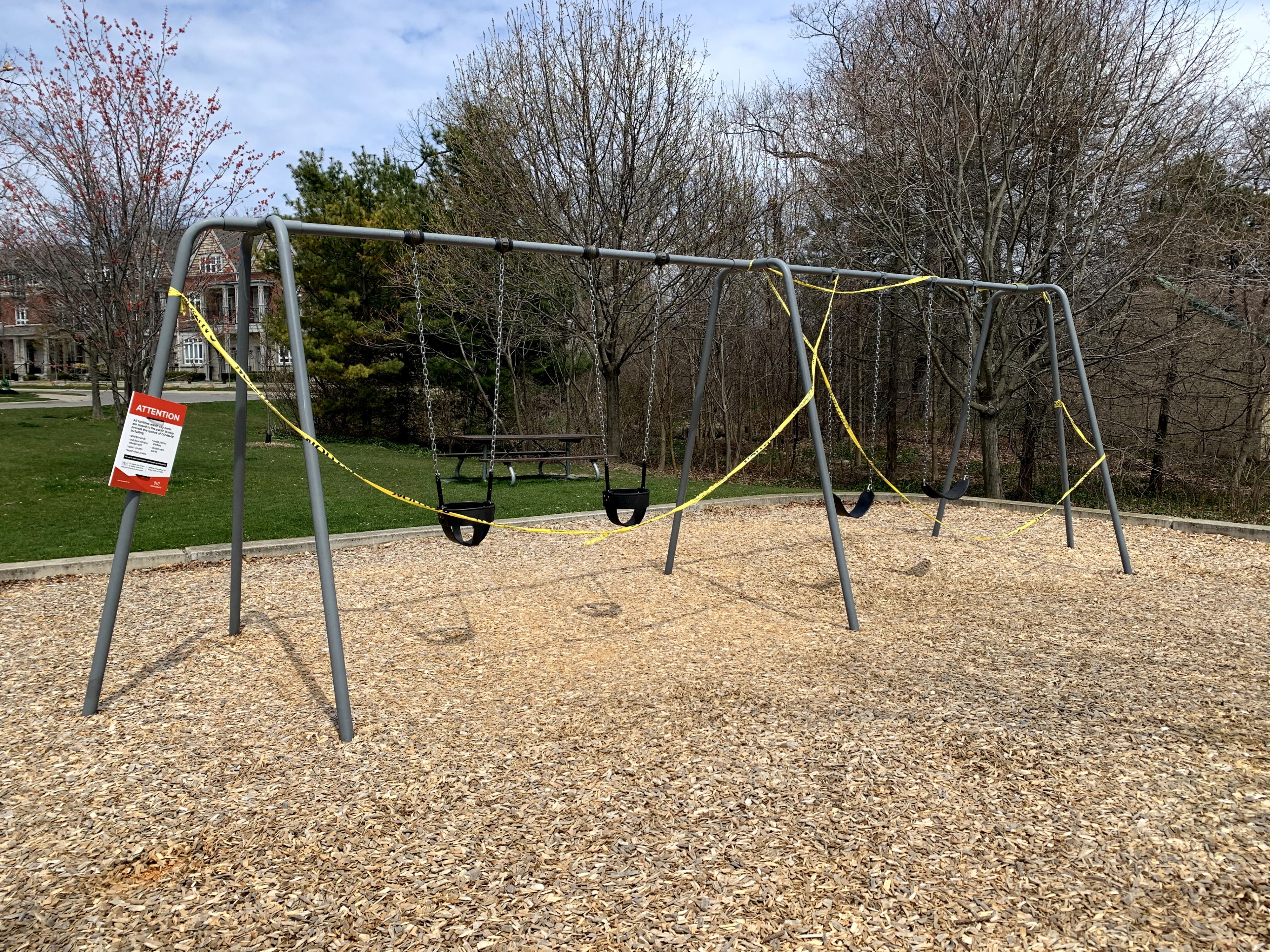
Ford’s decision to release dire COVID-19 modelling spurred Ontario into action
On April 3, Premier Doug Ford stood in front of the people of Ontario and shared dire projections. Modelling by the province at the time suggested as many as 1,600 people could die by the end of the month as a result of COVID-19, with up to 80,000 infections. Those projections were based on the latest numbers available at the time and government restrictions that were in place.
The Premier was visibly distressed as he shared the news. Ontario had instituted a variety of measures to attempt to battle the novel coronavirus, yet the data was still showing an unfathomable number of casualties.
“If this doesn’t give a wake-up call to people I don’t know what does. I don’t know what more we can say that if we don’t stay at home and practice social distancing the impact is going to be serious,” Ford said at the time.

The empty streets of Mississauga
The next day, the number of essential businesses in the province was cut from 74 to 44, in an attempt to slow the spread. Many who saw the numbers expected a total lockdown, similar to those seen in Europe or parts of Asia, with residents barely allowed to leave the house at all.
It never came.
Instead, with the most recent measures still in place, Ontario’s top doctors returned two weeks later. They sat at Queen’s Park and delivered good news.
Rather than the peak of the pandemic coming in May, they said it looked like it had already arrived and was significantly lower than expected. In terms of cases and hospitalizations, the province was doing better than its best case projection, with plenty of capacity left in the healthcare system. Deaths, they said, were harder to predict as a result of the novel coronavirus’s presence in at least 127 long-term care homes that day.
“When we release the models and when the numbers in those models are quite frightening, people do change behaviour,” Adalsteinn Brown, from University of Toronto’s Dalla Lana School of Health, explained last Monday as the new models were released.
The number of deaths the original models predicted had a sobering effect, leaving people with little uncertainty about exactly what could happen if they continued to meet up or gather in parks and other public or private spaces.

Public parks across Ontario have been closed during the pandemic.
“If you look out on the streets at what is happening, behaviour has changed and that reduces the infection — they feed back on eachother. I understand why people say ‘that isn’t the same projection as two weeks ago’… [but] we’d hope it wouldn’t be,” Brown added. “You want to see that feedback between what would happen and what is actually happening now.”
The province’s decision to release the projections at the beginning of the month served two purposes. It delivered on Ford’s promise to be transparent and share the data he received with the public, but it served an even more important role: it scared people.
As a result, the population bought into physical distancing.
The idea of the government sharing the threat of death and holding our mortality over people’s heads may seem somewhat dystopian, but much of this pandemic does. The speed with which the virus has swept through Ontario’s long-term care homes shows why drastic action was required to increase public buy-in and avert the most dire realities.
The decision to release projected deaths in Ontario and its impact on physical distancing hinges on people’s instinctive desire to protect themselves and their family. Most are capable of empathy and want others to avoid suffering, but everything that does not directly affect an individual is abstract by its very nature. In addition, a natural human mechanism, especially in the young, is a feeling of invincibility — the idea that bad things happen to other people, but not you. When a virus as contagious as COVID-19 is on the loose, that attitude can be extremely dangerous.
By showing the stark numbers, graphed in black and white, the Government of Ontario was able to puncture through people’s natural disconnect. The idea that, unchecked, COVID-19 could claim a parent, grandparent or friend from everybody helped override apathy.
The human body has a slew of instincts built in to help with our preservation. Disgust at out of date food (or food that has previously made you ill), for example, is designed to avoid ingestion of anything potentially poisonous.
Studies into the spread of disease and contagion have also shown that thinking individually becomes significantly less valued when there is a severe risk of harm. For a population that is cognizant of a dangerous virus threatening them or their family, judgement of those breaking rules is significantly harsher. “Some people have a particularly sensitive behavioural immune system that makes them react extra-strongly to things that they interpret as a potential infection risk,” Lene Aarøe of Aarhus University in Denmark explained in an interview with BBC Future.
A 2017 social science research paper by a group of North American academics investigating the threat of disease and its impact on moral vigilance came to a similar conclusion. “One of the emergent findings in this literature is that the perceived threat of disease is linked to a constellation of attitudes and traits implying behavioral caution and attitudinal conservatism, such as lower levels of sociability and lower tolerance for nonconformity,” the three researchers wrote in the journal Social, Psychological and Personality Science.
They found when the threat of disease was made “temporarily salient,” people made harsher moral judgements about those breaking rules and endangering others, something especially relevant to the current pandemic. The more discourse there is about the disease illustrating its harm or danger to people, the more likely the population is to take action. One of those actions is moral judgement against those breaking the rules put in place to protect the population.
“Of particular relevance here is the perception of threat. Given that many norms provide beneficial buffers against risks and hazards, it follows that individuals may show especially strong conformist tendencies under conditions in which they feel especially vulnerable to risks and hazards,” the paper reads.
In Mississauga and Brampton, the theory seems to be playing out. Thousands of residents have called 311 in the two cities to report those breaking rules around physical distancing, concerned they will selfishly contribute to the spread of the virus. In Brampton, fines range from $500 to $100,000 for individuals, while in Mississauga the standard provincial ticket of $750 per person is being enforced.
A handful of “bad apples,” in the words of Brampton Mayor Patrick Brown, are not taking the situation seriously. As a result, the general population, fully aware of the threat, is pressuring politicians to implement more restrictions on civil liberties.
A poll released by Ipsos on April 9 reflected these attitudes across the Canadian population. Asked about a variety of issues, 85 percent of those polled said they favoured fines for anyone breaking physical distancing rules and 76 percent indicated support for limits on personal freedom.
In a result unprecedented before the pandemic, 65 percent said they were supportive of the federal government using cell phone data to monitor those who were supposed to be in quarantine.
Releasing provincial modelling was important for transparency, allowing the public to understand the numbers Doug Ford and his COVID-19 Command Table see every day. That helped the general population to comprehend the need for something to change.
“There's feedback and the numbers are going to change,” Adalsteinn Brown said. “If they didn’t, either there’s something terribly wrong with the policy or there’s something terribly wrong with the models.”
Drawing on a sense of responsibility — the Ontario Spirit, as Ford likes to phrase it — people took the issue more seriously at the start of the month. They understood that 80,000 cases by the end of April could spell disaster for the health system and lead to the death of their parents, neighbours or even their own demise.
Last Monday, in a rather understated manner, Matt Anderson, CEO of Ontario Health, told journalists that “the models are the models.”
In reality, it is Ontarians who determine the models and, when the population is able to take the threat seriously, the numbers change to reflect it.
As pressure builds to reopen society, it remains to be seen how we will behave if the threat of death is no longer presented to us on a daily basis in the numbers.
Email: [email protected]
Twitter: @isaaccallan
Tel: 647-561-4879
COVID-19 is impacting all Canadians. At a time when vital public information is needed by everyone, The Pointer has taken down our paywall on all stories relating to the pandemic to ensure every resident of Brampton and Mississauga has access to the facts. For those who are able, we encourage you to consider a subscription. This will help us report on important public interest issues the community needs to know about now more than ever. You can register for a 30-day free trial HERE. Thereafter, The Pointer will charge $10 a month and you can cancel any time right on the website. Thank you.
Submit a correction about this story


